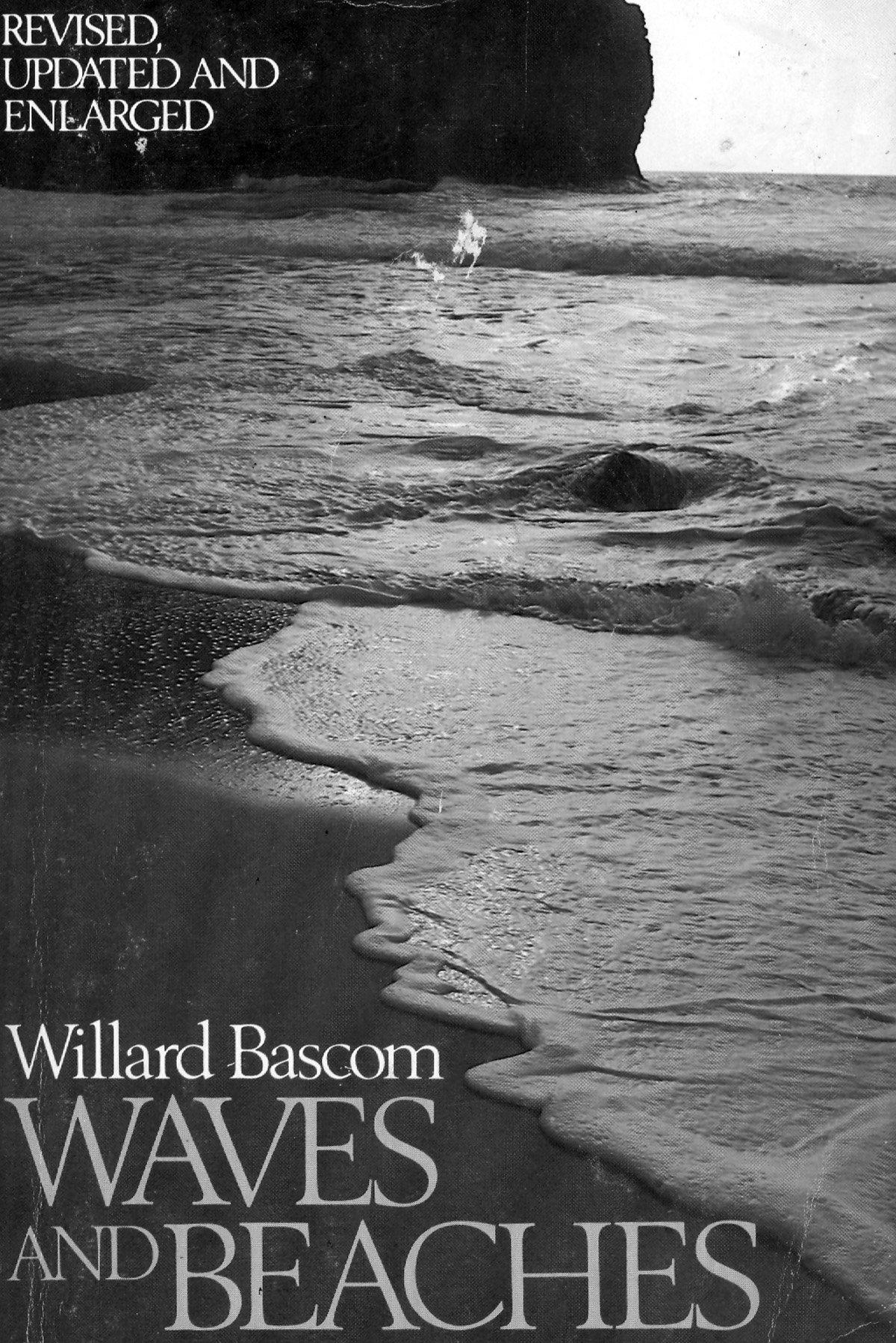Waves and Beaches—The Book
Can you recall last time you discovered a book by total chance and it totally reoriented your thinking about a subject? I can. One of my most memorable finds was in a moldy cabin’s soggy library. I pulled it off the shelf, read it one sitting, and nothing about the ocean has ever been the same.
Waves and Beaches: The Dynamics of the Ocean Surface by Willard Bascom is a classic of natural science. I own the 1980’s revised and updated edition but the book first came out in 1964.
Waves and Beaches begins: “Is there anyone who can watch without fascination the struggle for supremacy between sea and land?” Well, no, not if a person is even remotely sentient and actually manages to hit the beach every now and then and notice, I mean really look hard at what is all around you.
Until reading this book, I thought I was noticing everything at the ocean’s edge. As it turns out, there is a lot more to understand about the sand I walk upon and the waves that hypnotize me. For starters, I had no idea mathematics played such an interesting and elementary role in the motion of waves or the slope of beaches. I only wish I’d had a math teacher in junior high or high school who loved this book. It might have made me love math instead of utter indifference toward it.
Bascom’s 365-page book examines everything related to waves and beaches and explains them right down to their tiniest tumble or, literally, a grain of sand.
One of the utterly fascinating benefits of reading this book is learning the names of features I’ve seen a million times but didn’t even know had names. Take for example, the various marks on the beach made by retreating tides: swash, backwash, rills, cusps, domes, pinholes, ripples. I can’t say I’m now obsessed with identifying everything I see at the beach, but a bit more knowledge of the natural world isn’t such a bad thing in life. In fact, a lot more might save the planet.
In Waves and Beaches, Bascom writes simple yet beautiful and informative sentences like: “Waves are undulating forms that move along the surface of the sea.” Or try this one: “A beach is an accumulation of rock fragments subject to movement by ordinary wave action.” And my favorite: “Beaches are ever-changing, restless armies of sand particles, always on the move.” Bascom might have considered himself more of a scientist than a writer, but he knew how to construct metaphors in nature and slyly present them to readers:
“A wonderful time to observe…is early in the morning, especially after a high tide. Often the air is still and pleasant light fills the sky. The beach is clean and virginal, the night’s waves erased the human marks of the previous day.”
Amen.

